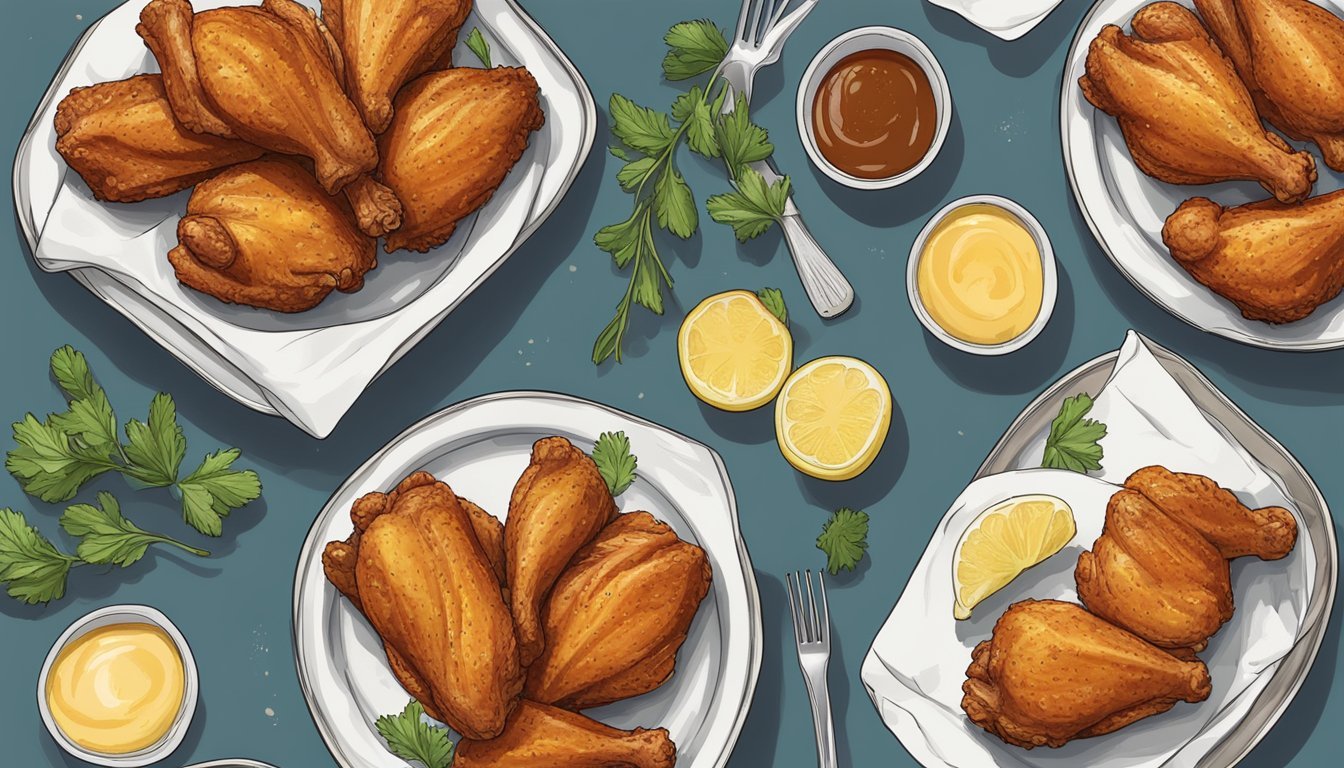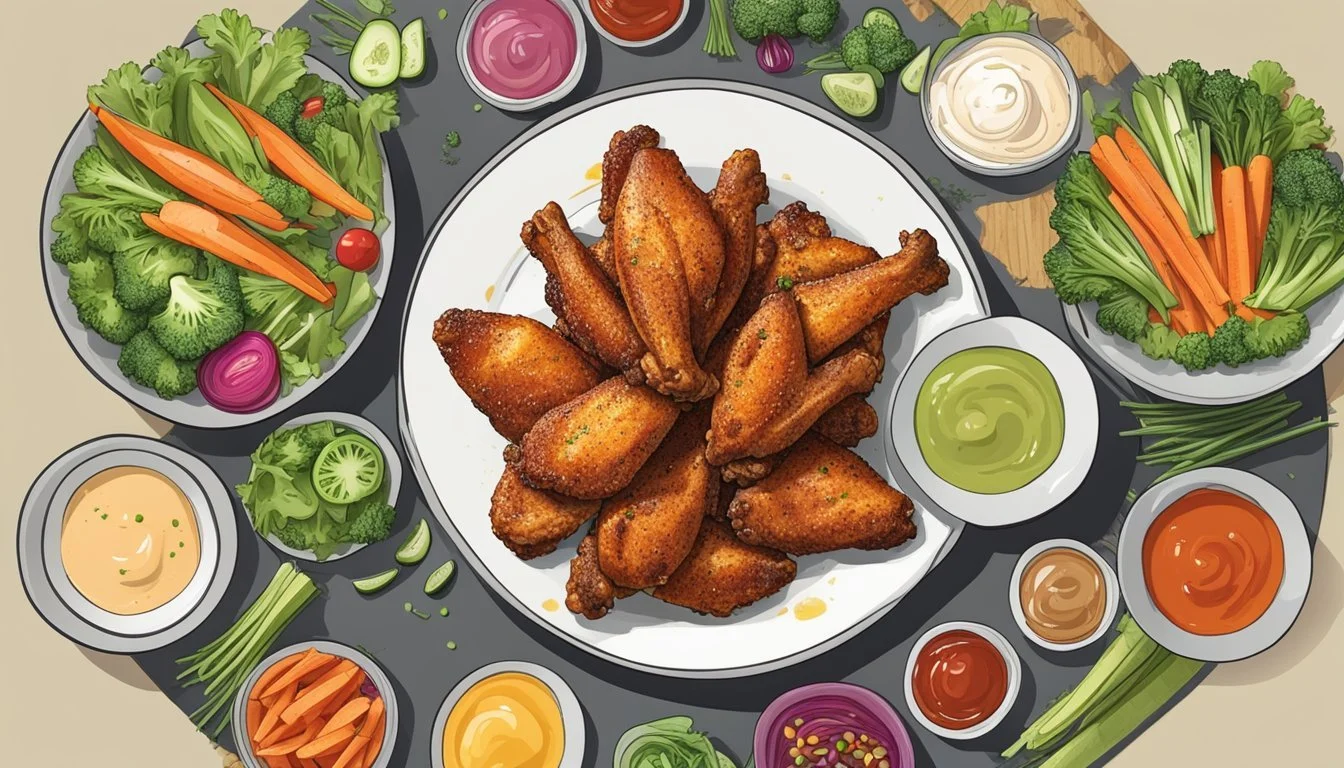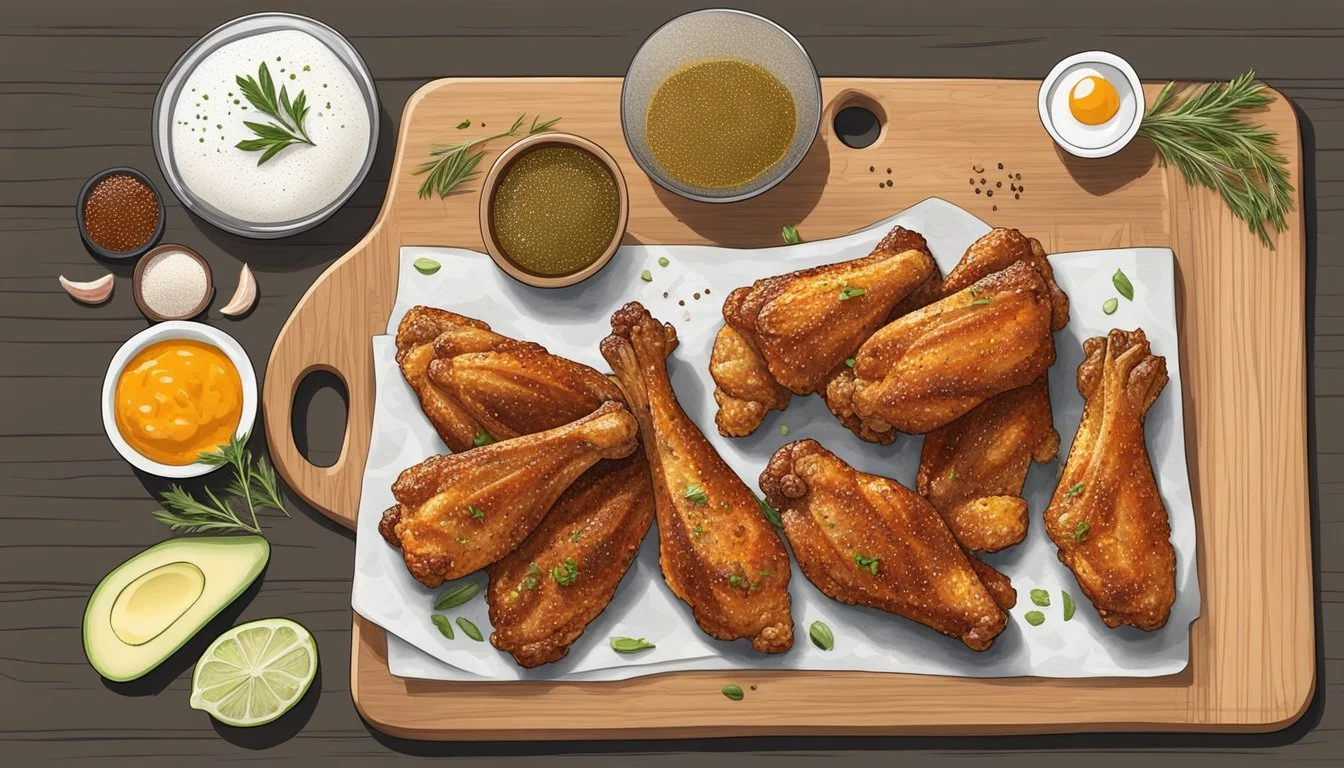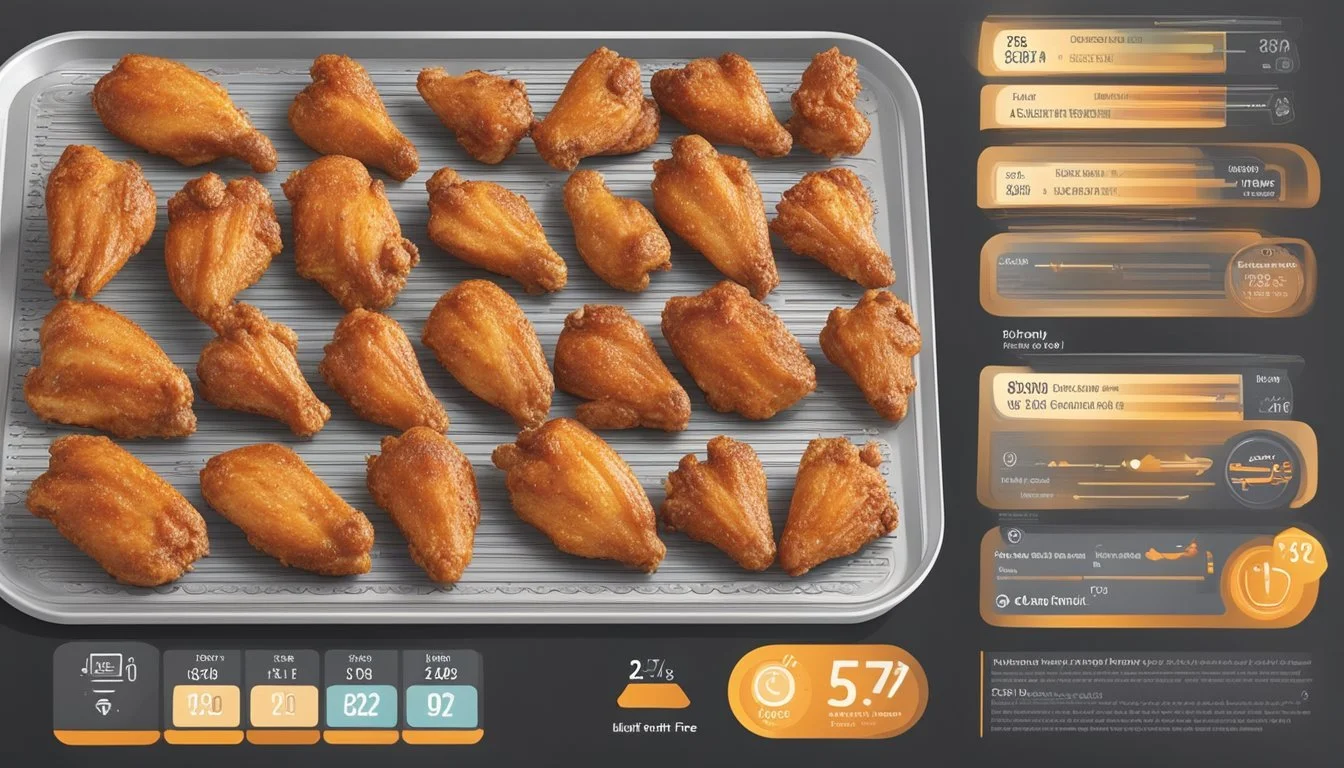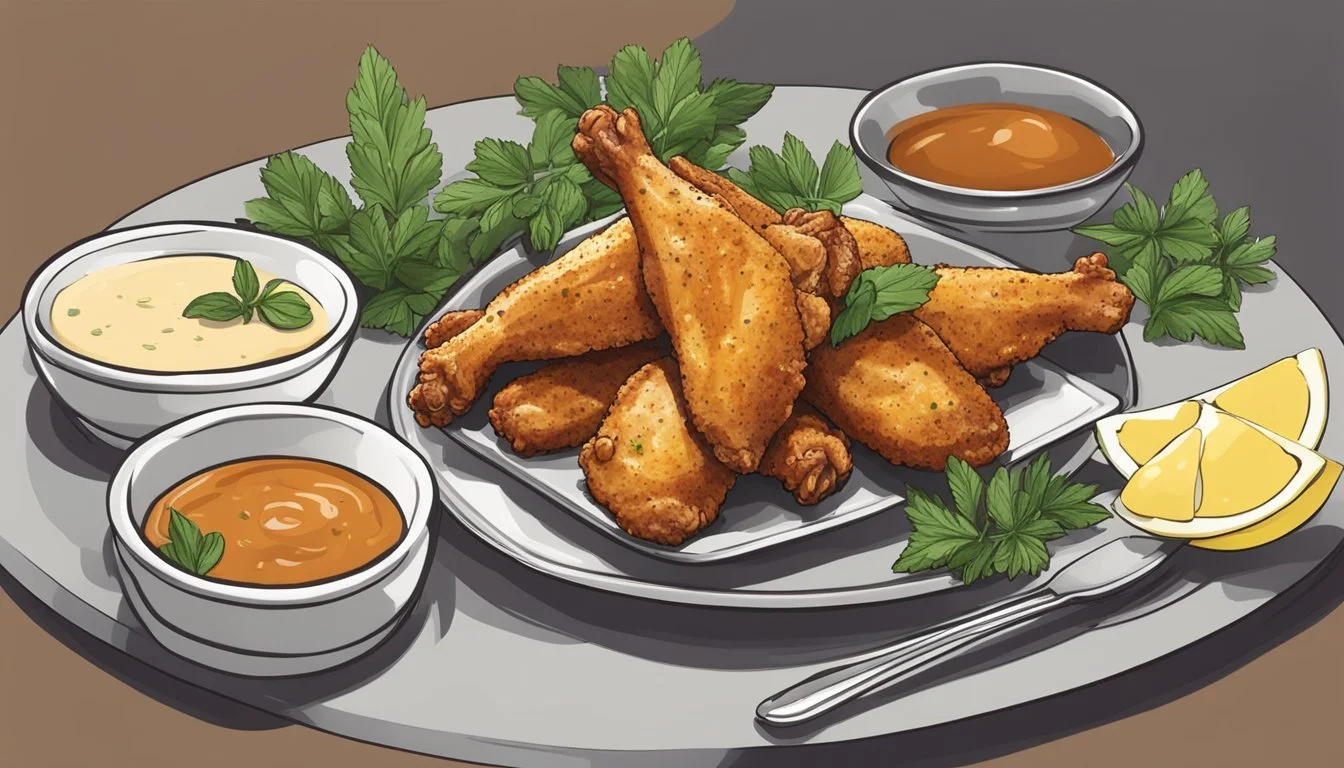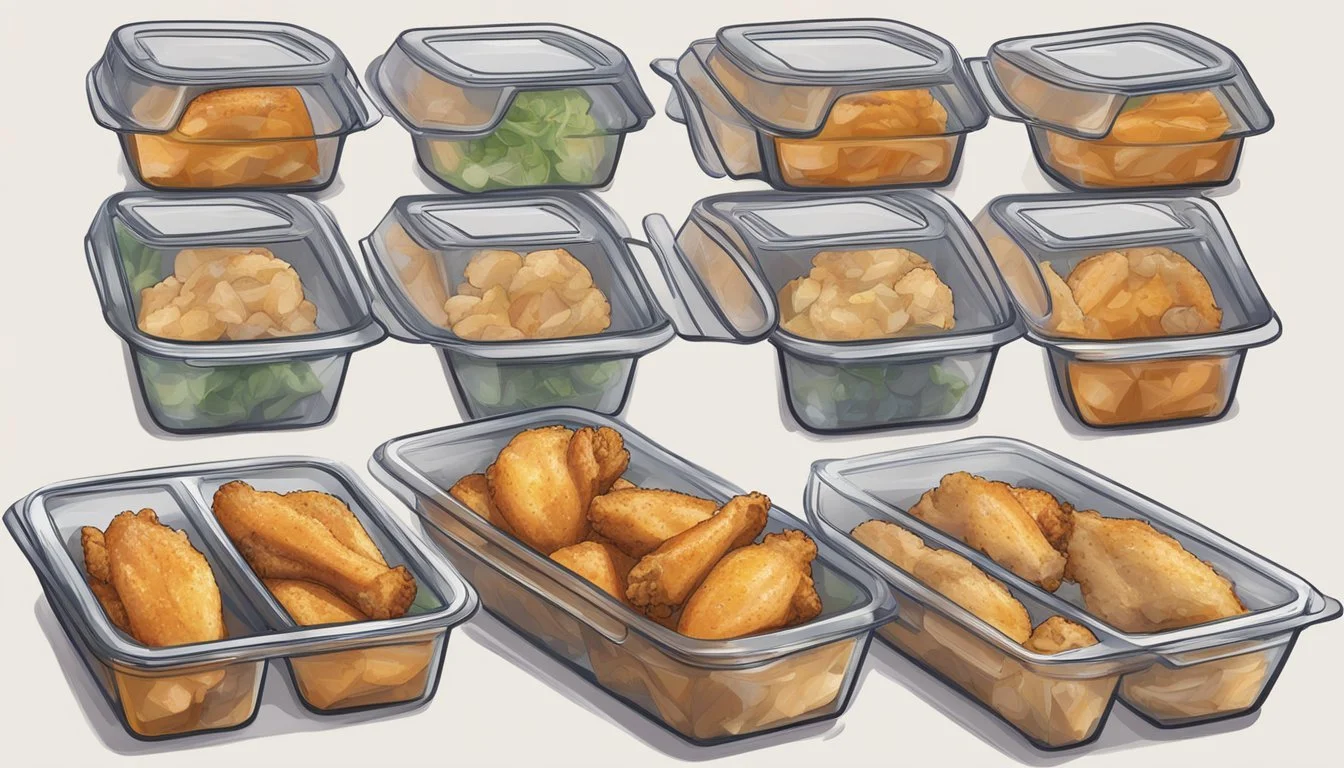How Long Do Gluten-Free Chicken Wings Last?
Shelf Life and Storage Tips
When it comes to enjoying gluten-free chicken wings, keeping them fresh for as long as possible is crucial. Properly stored, gluten-free chicken wings can last for about three to four days in the refrigerator. This ensures that they remain safe to eat and still flavorful without losing their crispy texture.
To maximize their shelf life, it's essential to place the wings in an airtight container or tightly wrap them in aluminum foil or plastic wrap. These methods help maintain the wings' moisture and prevent them from absorbing other odors in the fridge. Additionally, for those who prefer to prepare in advance, gluten-free chicken wings can be frozen, and when stored correctly, they last for up to two months.
For people concerned about food safety, reheating is a straightforward process. Reheat wings in the oven at 350°F until they reach an internal temperature of 165°F to ensure they are safe to eat.
Understanding Gluten-Free Chicken Wings
Gluten-free chicken wings are a popular option for those avoiding gluten, a protein found in wheat, barley, and rye.
They must be prepared using gluten-free ingredients such as spices, sauces, and coatings.
Why Choose Gluten-Free?
People with celiac disease or gluten sensitivity choose gluten-free foods to avoid adverse health effects.
Cross-contamination must be avoided during preparation.
Preparation Methods
Chicken wings are typically baked or fried.
Common Ingredients:
Spices: Garlic powder, paprika, cayenne.
Seasonings: Salt, pepper, baking powder.
Oils: Olive oil, vegetable oil.
Baking is favored for a healthier option. Use a wire rack to ensure even cooking.
Cooking Steps:
Preheat the oven to 400°F.
Pat wings dry.
Season wings.
Bake for 45 minutes to 1 hour, flipping every 20 minutes.
Safety and Storage
Store cooked chicken wings in airtight containers.
Refrigerate within two hours of cooking.
Reheating Tips:
Use an oven or microwave.
Avoid overheating to maintain texture.
Selecting Ingredients for Gluten-Free Wings
Choosing the right ingredients for gluten-free chicken wings is essential to ensure they are safe for people with celiac disease and those who are gluten-sensitive. This includes selecting appropriate seasonings, coatings, and sauces, which play a significant role in achieving the perfect flavor and texture.
Choosing the Right Chicken Wings
First and foremost, it is important to start with high-quality chicken wings. Look for fresh, organic wings that are free of additives and preservatives. Freshness is crucial because it affects both the taste and the texture of the wings.
When possible, opt for free-range or organic chicken wings. These often have better flavor and texture. Frozen wings can also be used, but make sure they are completely thawed and patted dry to ensure crispiness.
Gluten-Free Seasoning and Spices
Seasoning is key to flavor. Use gluten-free spices and seasonings to add depth to your chicken wings. Common options include salt, pepper, garlic powder, and onion powder.
Ensure all seasoning mixes are specifically labeled as gluten-free to avoid cross-contamination. Popular spice choices include paprika for a smoky taste and black pepper for a mild heat. Kosher salt or sea salt can be used based on preference.
Gluten-Free Coating Options
A good coating is essential for crispy wings. Baking powder is often used for its leavening properties, which help create a crispy crust. Ensure your baking powder is gluten-free.
Alternatives include cornstarch or potato starch, which both provide a light and crunchy texture. For a more robust crust, gluten-free flour blends can be used. These blends often contain a mix of rice flour, tapioca starch, and potato starch to mimic traditional flour.
Gluten-Free Sauces and Dips
Choosing the right sauces and dips is vital. Buffalo sauce and hot sauce are popular choices, but always check for gluten-free labeling. Some commercial sauces can contain hidden gluten in thickeners or preservatives.
For milder options, go for gluten-free BBQ sauce. When it comes to dips, ranch dressing and blue cheese dressing are classic choices. Always ensure these are labeled gluten-free. Homemade versions can be made using gluten-free ingredients, ensuring safety for those with celiac disease.
Preparation Techniques
Proper preparation of gluten-free chicken wings ensures they have optimal flavor and the right texture. This involves marinating, seasoning, coating, and choosing the best cooking method.
Marinating and Seasoning for Optimal Flavor
Marinating chicken wings enhances their flavor and helps retain moisture. He or she should start by patting the wings dry with a paper towel to remove excess moisture. A typical marinade combines oil, buffalo sauce, paprika, cayenne, garlic powder, and salt and pepper.
For best results, marinate the wings in the refrigerator for at least 2 hours. This allows the flavors to penetrate deeply into the meat. When seasoning right before cooking, mixing baking powder with salt can help create a crispy skin.
Coating and Battering Methods
Proper coating techniques are essential for achieving crispy gluten-free wings. They should coat the wings in a mix of baking powder, cornstarch, and seasonings such as salt and pepper. This combination helps render fat and create a crunchy texture.
For even coating, they can place the mixture in a large plastic bag, add the wings, and shake thoroughly. For a gluten-free batter, cornstarch or gluten-free flour can replace traditional wheat flour. It’s essential to ensure all ingredients used are certified gluten-free.
Cooking Methods for Gluten-Free Wings
Oven baking is a popular method for cooking gluten-free wings. Preheating the oven to 250°F, then increasing to 400°F helps attain a crispy skin. Arranging the wings on a wire rack over a baking sheet allows air circulation and even cooking. Flipping them every 20 minutes ensures uniform crispiness.
Alternatively, an air fryer is efficient and yields similar results. Set it to 400°F and cook the wings in a single layer for about 25 minutes, shaking the basket halfway through.
For deep frying, he or she should heat oil to 350°F and fry the wings until golden brown and crispy. Grilling is another option, providing a smoky flavor. Grill the wings over medium-high heat, turning occasionally until they reach an internal temperature of 165°F.
These methods highlight the importance of controlling temperature and arrangement to achieve the desired texture and taste in gluten-free chicken wings.
Optimal Cooking Temperatures and Times
Cooking gluten-free chicken wings to perfection involves precise temperatures and timing.
Oven Baking:
Preheat the oven to 400°F (204°C).
Place seasoned wings on a wire rack over a baking sheet.
Bake for 45-60 minutes.
Flip wings every 20 minutes for even cooking.
Lower-and-Slow Method:
Preheat the oven to 250°F (121°C).
Bake wings for approximately 30 minutes.
Increase oven temperature to 425°F (218°C).
Continue baking for another 30-45 minutes.
Internal Temperature:
Check the internal temperature using a reliable meat thermometer.
Wings are safe and ready when they reach an internal temperature of 165°F (74°C).
Cooking on the Grill:
If grilling, preheat the grill to medium-high heat.
Grill wings for 20-25 minutes.
Turn wings occasionally to avoid burning.
Ensure they reach an internal temperature of 165°F (74°C).
Air Frying:
Preheat the air fryer to 400°F (204°C).
Cook wings in a single layer for 25-30 minutes.
Shake the basket occasionally for even cooking.
Tips:
Use baking powder for extra crispiness.
Pat wings dry with paper towels before seasoning for best results.
Serving and Presentation
Proper serving and presentation are essential to enhance the appeal of gluten-free chicken wings. This section provides detailed guidance on creating an appealing dish and accompanying side dishes to complement the wings.
Creating an Appealing Dish
To create an appealing dish, attention to detail is key. Arrange the gluten-free chicken wings on a large platter in a visually pleasing manner. Ensure each wing is adequately spaced to avoid crowding and ensure even distribution.
Garnishes: Use fresh herbs like parsley or cilantro for a splash of color.
Dipping Sauces: Offer a variety of gluten-free dipping sauces such as BBQ sauce, buffalo sauce, and dairy-free ranch dressing. Display them in small, separate bowls.
Incorporate celery sticks and carrot sticks on the side to add a fresh, crisp contrast to the spicy or savory wings. A clever touch for parties and game days is to serve the wings on festive platters or decorative trays to add to the ambiance.
Accompanying Side Dishes
Pair the gluten-free chicken wings with a selection of side dishes to create a balanced meal. French fries and sweet potato fries are classic options that are well-received at parties and game days. Ensure they are cooked using gluten-free oil and seasonings.
Fresh sides such as celery sticks and carrot sticks add a refreshing element and are also gluten-free. For a lighter and dairy-free option, consider serving a mixed green salad with a gluten-free vinaigrette.
To cater to a wider audience, include gluten-free and dairy-free coleslaw, which complements the wings' flavors. Serving these sides in individual portions or small bowls allows guests to easily sample and enjoy a variety of tastes.
Proper Storage Techniques
Ensuring your gluten-free chicken wings stay fresh involves proper storage in both the refrigerator and freezer. This guide covers the key steps for refrigerating leftovers and the correct method for freezing and thawing wings.
Refrigerating Leftover Wings
To keep leftover chicken wings fresh in the refrigerator, it is important to first allow them to cool to room temperature. Once the wings have cooled, place them in an airtight container. An airtight container helps maintain moisture and prevents the wings from absorbing other odors.
Step-by-Step:
Cool the Wings: Let the wings reach room temperature.
Use Airtight Containers: Store the wings in containers that seal tightly.
Refrigerate Promptly: Place the container in the refrigerator within two hours of cooking.
Stored properly, leftover chicken wings will remain safe to eat for up to 3-4 days.
Freezing and Thawing Wings
Freezing chicken wings extends their shelf life considerably. Before freezing, ensure the wings are completely cooled and dried to prevent ice crystals from forming. Place the wings in a single layer on a baking sheet and freeze until solid. Once frozen, transfer the wings to a freezer-safe, airtight container.
Freezing Tips:
Single Layer Freezing: Use a baking sheet to avoid clumping.
Use Proper Containers: Freezer-safe bags or containers prevent freezer burn.
Label with Date: Note the freezing date on the container.
To thaw, transfer the wings from the freezer to the refrigerator 24 hours before you plan to use them. This gradual thawing process helps maintain texture and flavor. If time is short, use the defrost setting on a microwave but ensure the wings are fully thawed before reheating.
Reheating for Best Quality
When it comes to reheating gluten-free chicken wings, maintaining quality is key. Different methods can affect texture and taste. Here’s how to achieve the best results.
Oven
Oven is often considered the best method. Preheat the oven to 375°F (190°C). Arrange wings on a baking sheet lined with foil. Heat for 10-15 minutes to achieve a crispy texture. Turn halfway through to ensure even heating.
Air Fryer
Air Fryer is another excellent option for crispy wings. Preheat to 360°F (180°C). Place wings in the basket, ensuring they're not overcrowded. Cook for about 7-10 minutes. Shake the basket halfway through for even cooking.
Microwave
Microwave is the quickest, though it may compromise the texture. Arrange wings on a microwave-safe plate. Cover with a paper towel to prevent splattering. Microwave on high for 1-2 minutes. Check and reheat in additional 30-second bursts if necessary.
Tips for Best Quality
Foil: Use foil in oven to make cleanup easier.
Spacing: Ensure wings are not touching each other to allow airflow.
Resting: Let wings rest for a couple of minutes before serving. This helps in retaining moisture.
Health and Dietary Considerations
For individuals with celiac disease or gluten intolerance, it is critical to ensure that chicken wings are gluten-free. Consuming even small amounts of gluten can lead to severe health issues for these individuals.
Many chicken wing recipes, when not breaded or coated with seasonings containing gluten, are naturally gluten-free.
However, cross-contamination is a significant concern. Care should be taken to avoid using shared utensils, cutting boards, or fryers that have been exposed to gluten-containing foods.
Benefits of Gluten-Free Chicken Wings:
Suitable for gluten-sensitive individuals.
Prevents the adverse effects linked to gluten consumption in those with celiac disease.
These wings can easily be adjusted to fit other dietary restrictions with appropriate sauces and seasonings.
Ingredients to Watch Out For:
Check for hidden gluten in sauces and seasonings.
Always read ingredient labels carefully.
Proper preparation and cooking techniques not only ensure the wings are gluten-free but also safe and enjoyable for everyone.
Exploring Recipes and Flavor Variations
Gluten-free chicken wings offer diverse flavors and easy preparation methods, each tailored to suit various tastes. From crispy baked wings to restaurant-quality renditions, both homemade and store-bought variations provide a feast for every occasion.
Homemade Recipes for Every Taste
Homemade gluten-free chicken wings can be adapted to various flavor profiles. A basic recipe might include baking at 400°F, utilizing seasonings like garlic powder, paprika, and salt. Crispy wings can be achieved by patting them dry and baking on a wire rack.
For a spicy touch, opt for buffalo sauce; for something sweet, try a hot honey glaze. Resting time, around 45 minutes in the oven, ensures the flavors meld perfectly.
Frozen wings from the grocery store can also be enhanced with homemade sauces. Popular combinations include tangy barbecue and savory herb mixes. These options make party wings an easy hit for gatherings.
Restaurant-Quality Wings at Home
Creating restaurant-worthy gluten-free wings at home means focusing on texture and coating. A mix of baking powder and cornstarch, combined with dual oven temperatures, yields extra crispy skin. Begin at 250°F to render fat, then increase to 400°F.
Seasonings like buffalo and barbecue sauce provide that signature restaurant flavor. Homemade wings can mimic the depth of restaurant versions, offering both spicy and savory varieties.
Using wire racks ensures even cooking. For an added twist, hot honey sauce delivers an irresistible blend of heat and sweetness. Utilizing these techniques means every batch is bound to impress.

